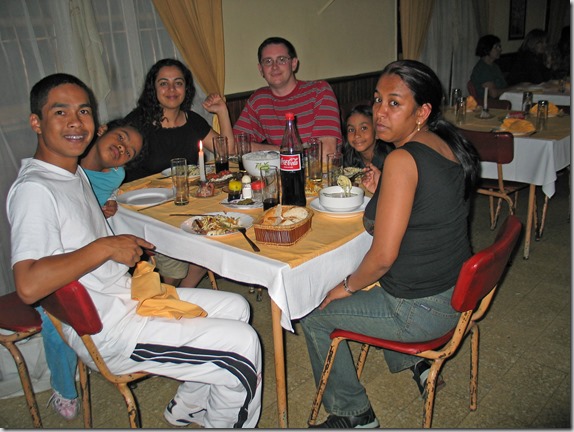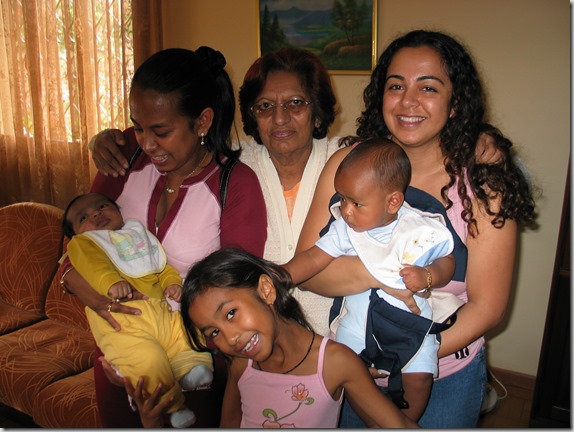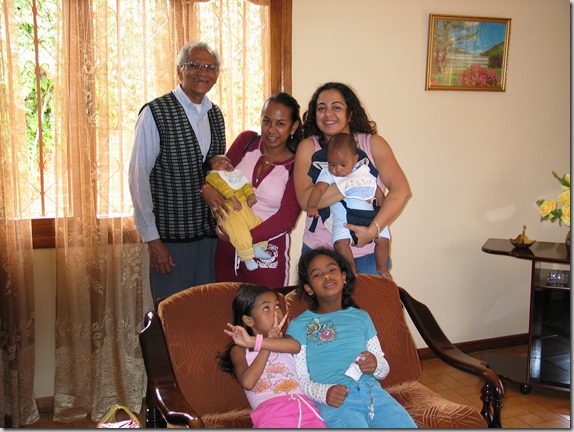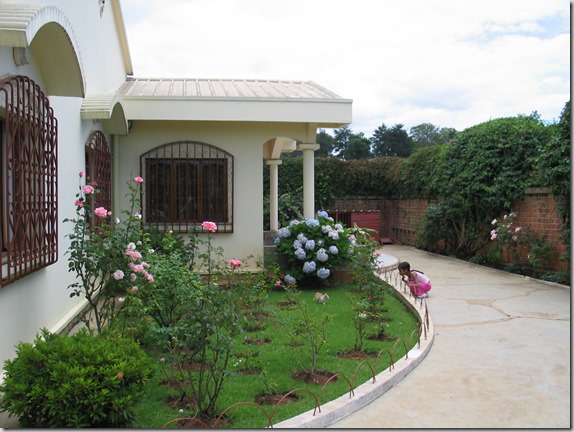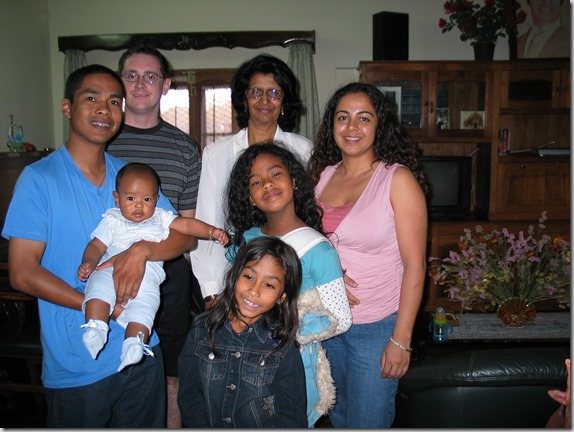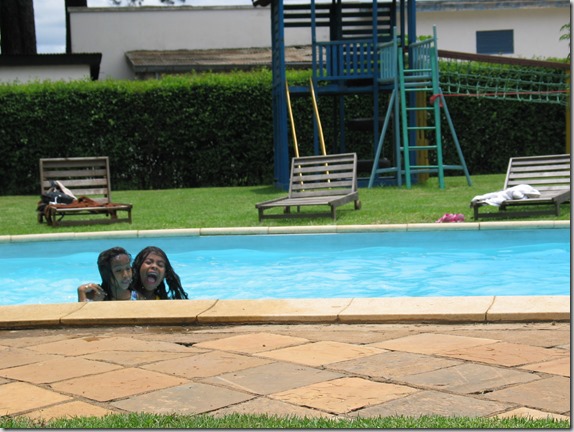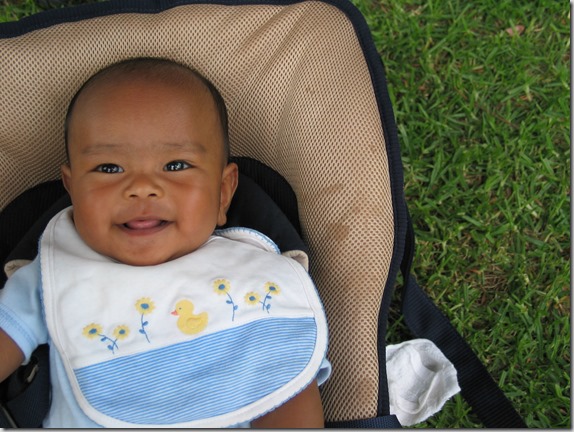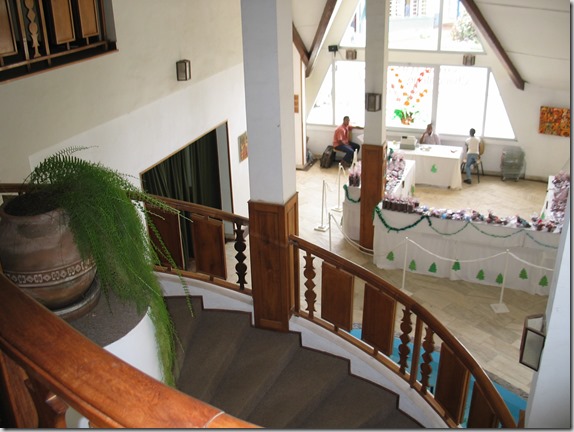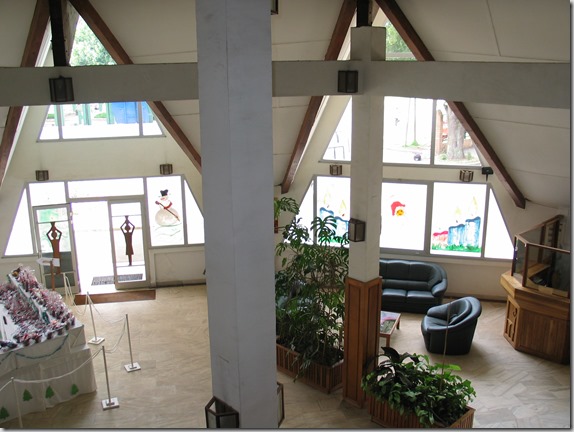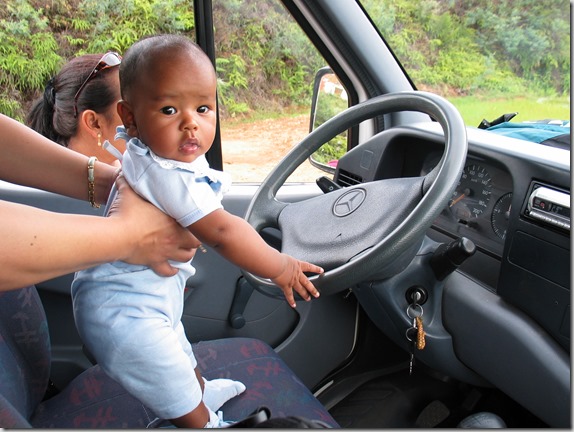Today was the day I would finally see where Nadine was born and spent her first 17 years. Tsiry rented an 18-passenger van and driver for 2 days, which would be our transportation. Antsirabe is a town about 180 km south of Antananarivo, and the road to get there is in pretty good shape.
As a bit of an aside, the current President of Madagascar has been working hard to improve the infrastructure. As a self-made businessman, he understands the importance of a good transportation infrastructure if the economy is to improve. Therefore, it has been a project of recent years to rebuild much of the failing road network.
The Drive to Antsirabe
The road to Antsirabe from Tana is full of twists and turns as it winds its way through the mountains and valleys of the interior of Madagascar. It is very scenic, and I took many photos along the way.
Below is a local moving a load of bricks, which is a very common sight here. You also see piles of brick like this at the side of roads everywhere. Actually, many of the locals make this brick at the side of the roads near the rivers and rice fields. You see them forming the red clay into bricks and then baking them in fires at the side of the roads. All brick is pretty much made locally–almost on site.

Here we see the locals doing laundry in the river. I don’t know if the dirty water actually makes the laundry cleaner.
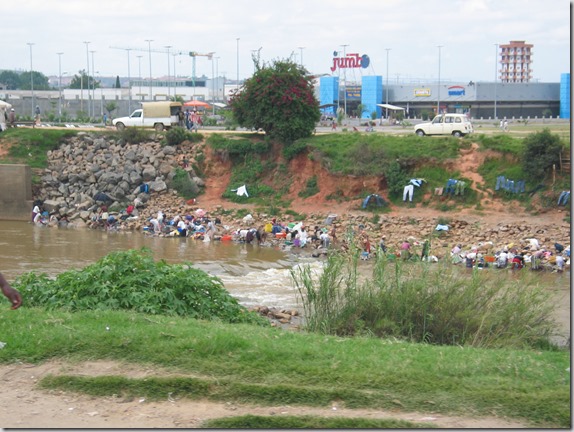
Another of the many red-coloured rivers…
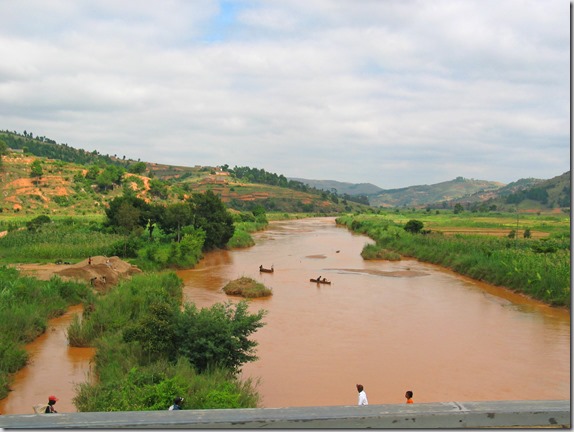
Stone route marker along the highway. RN7 (Route Nationale #7)…
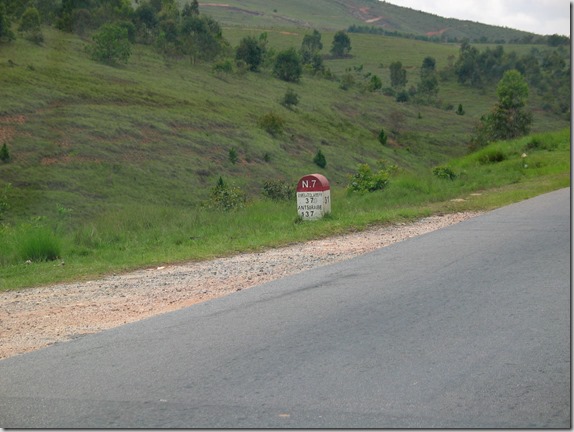
We stopped at a marketplace of artists along the road (I didn’t get a photo of the place, but it was quite nice). I purchased a nice canvas painting of a zebu cart being pulled along the Alée des Baobabs. We bargained and I got it for 150,000 FMG, which works out to about $12. Of course, it will probably cost me about $200 to have it framed when I get home. I’m told that prices in stores are largely firm. However, when purchasing from shops like this, the rule of thumb is to offer 1/3 of the asking price.
Here’s a picture of Bridge crossing the highway just down from the market where we stopped.
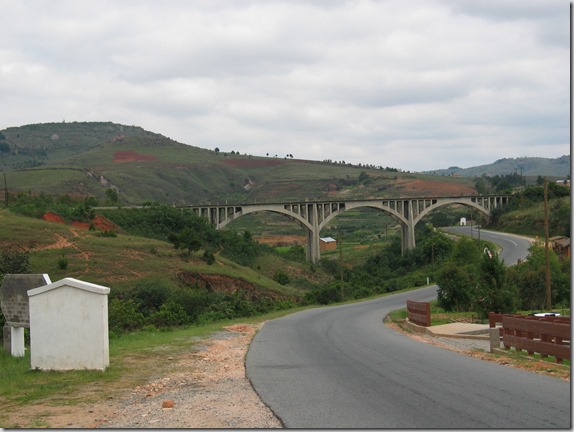
Zebus resting at the side of the road…
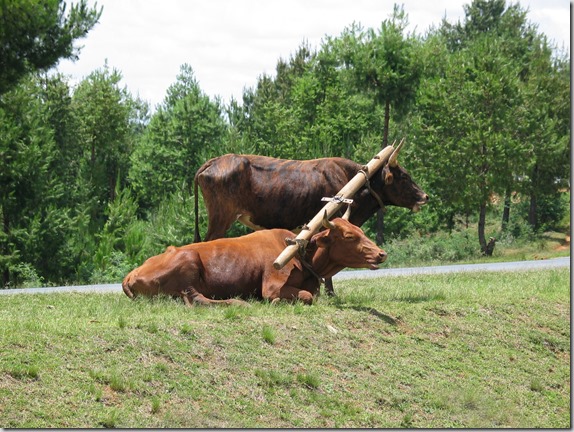
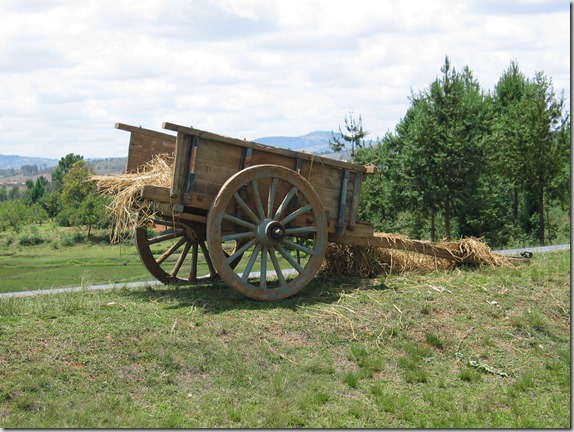
Our mini-bus transportation…
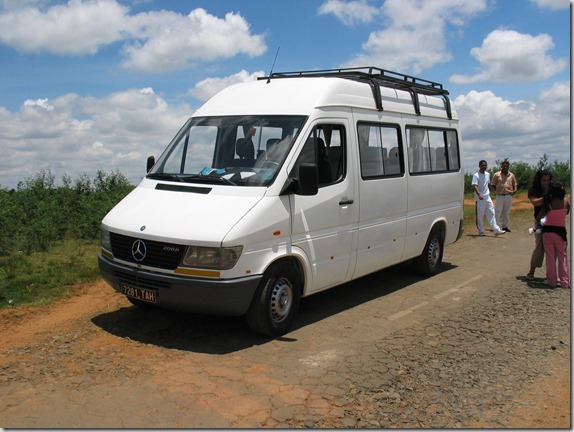
Railroad underpass. Note it’s only 1-metre gauge in Madagascar…
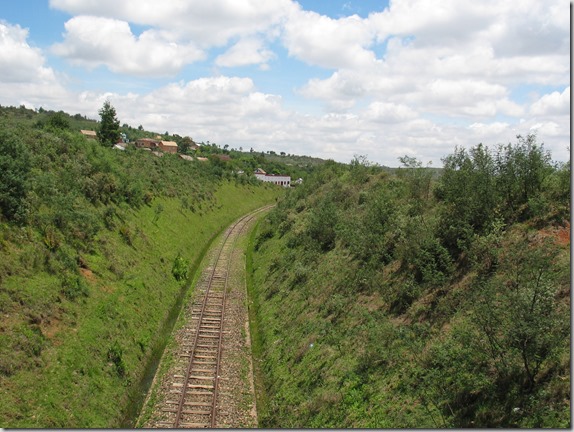
Nice valley along the road…
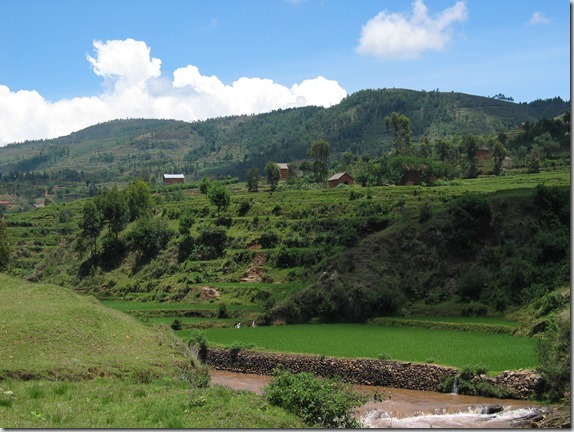
Red cliffs…
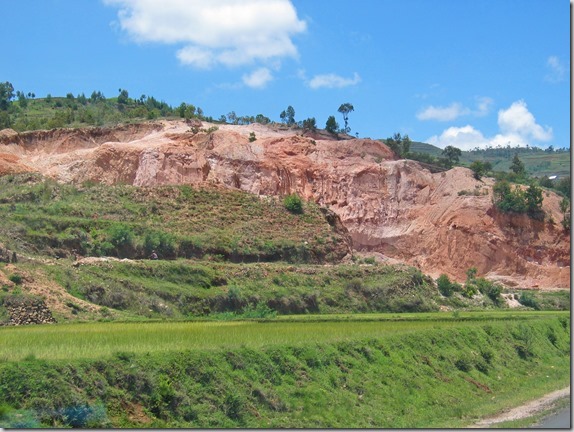
Another river picture…
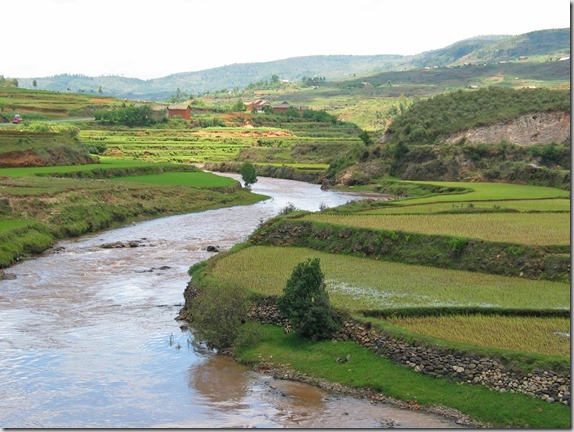
A bridge I don’t think I would want to cross…
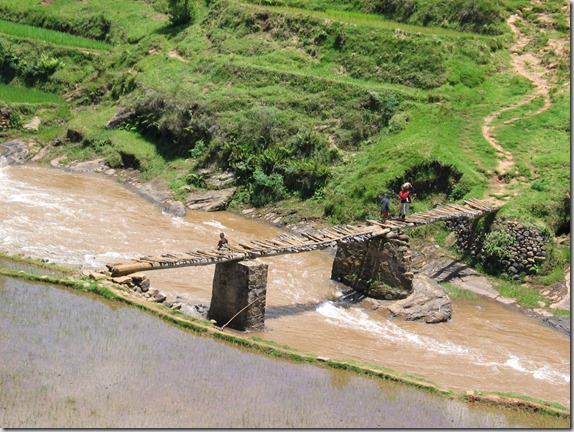
Large area of rice fields and other crops…
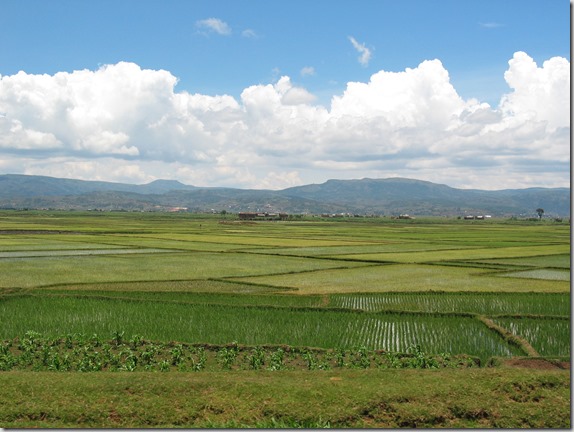
As we got closer to Antsirabe, the crops moved from being lots of rice fields to more and more vegetables. Apparently, Antsirabe is known as the best place in Madagascar for vegetables.
Arrival in Antsirabe
We arrived in Antsirabe around lunchtime, checked into the hotel and had some lunch before exploring the town. Below is a picture of the front of our hotel in Antsirabe. It’s nothing fancy, but it was comfortable.
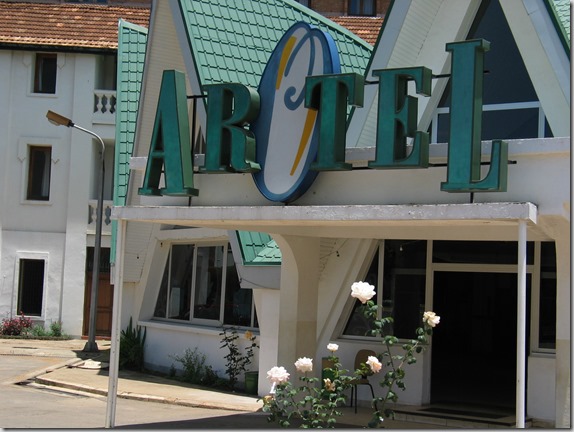
Below is the house that Nadine lived in during her high school years.

Route d’Ambositra–A street on the way to school…
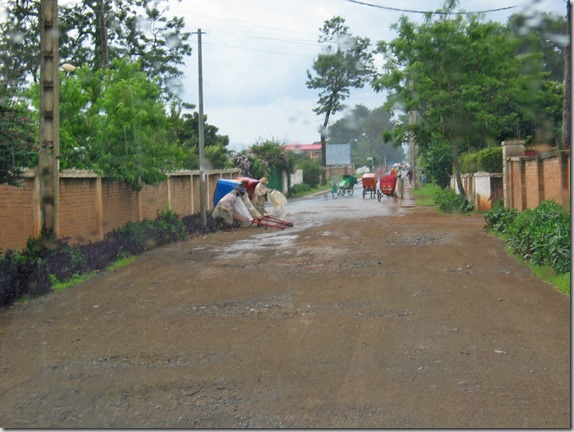
Shortcut to school along the railway tracks…
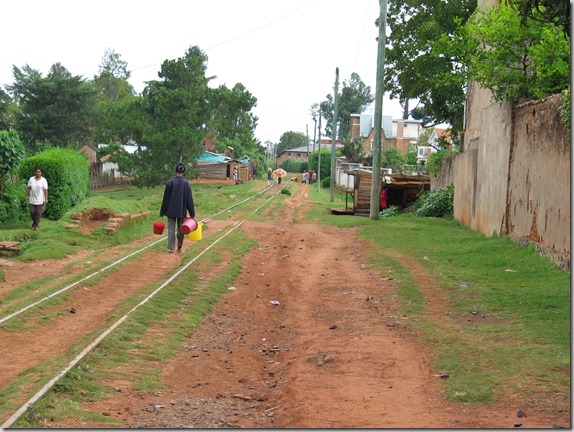
Nadine’s primary school…
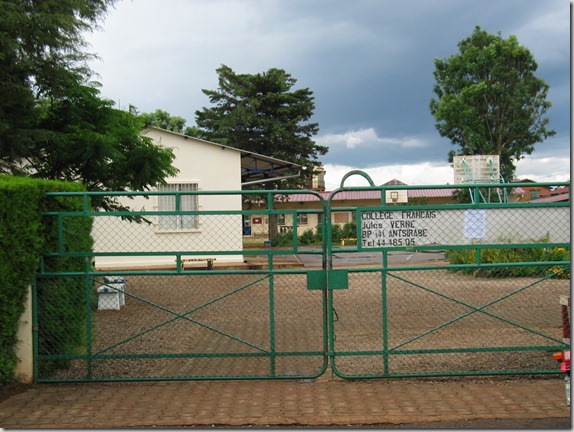
Train station in Antsirabe…

Hotel des Thermes—Nice hotel we didn’t stay at…
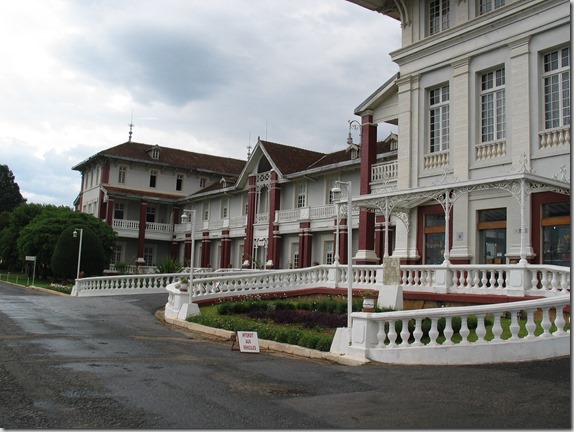
Visy Gasy—Source of thermal water…
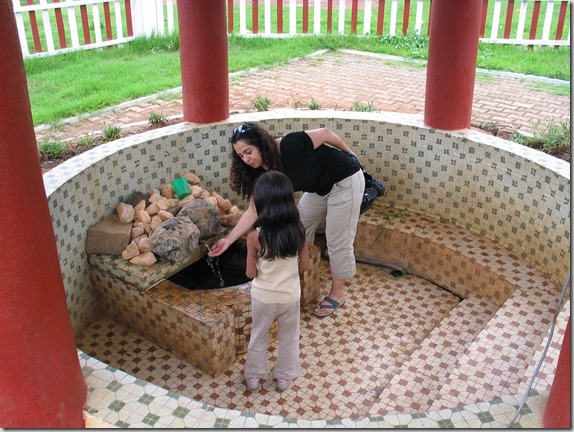
A road on the way to Nadine’s mother’s farmland…
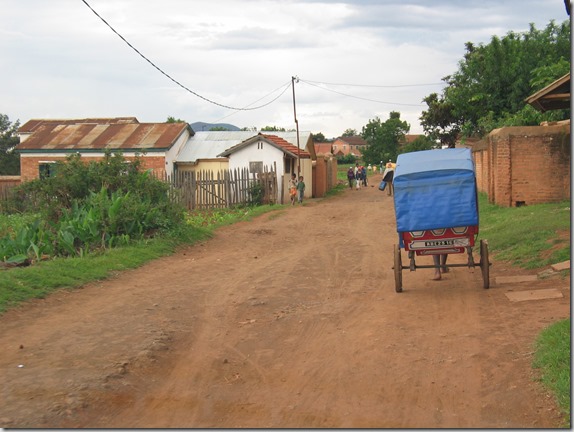
The road in front of Nadine’s mother’s farmland…
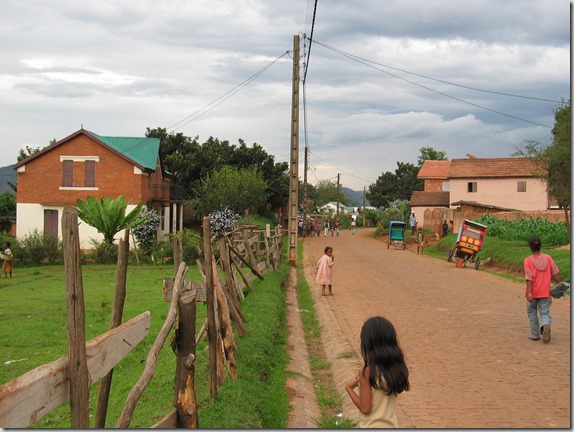
Nadine’s mother’s farmland…
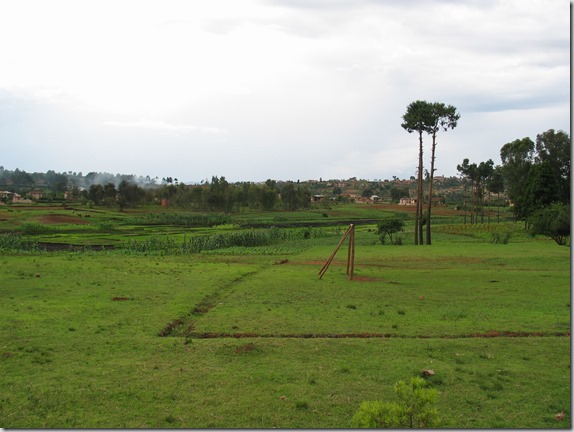
One the way to the family plot…
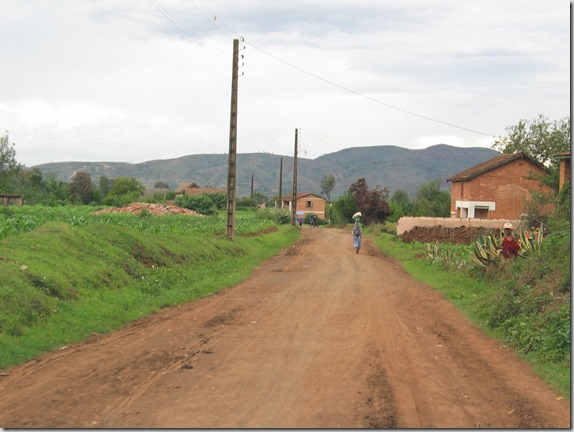
This is the site of the house Nadine was born in. In the foreground, we see the remains of the original family house. In the background is the family tomb where Nadine’s mother, her grandparents, and other generations of her mother’s family entombed. Ancestral traditions are very important among Malagasy families. Ancestors are often celebrated through exhumations. The Malagasy and some other Australian tribes are the only people who practice exhumation.
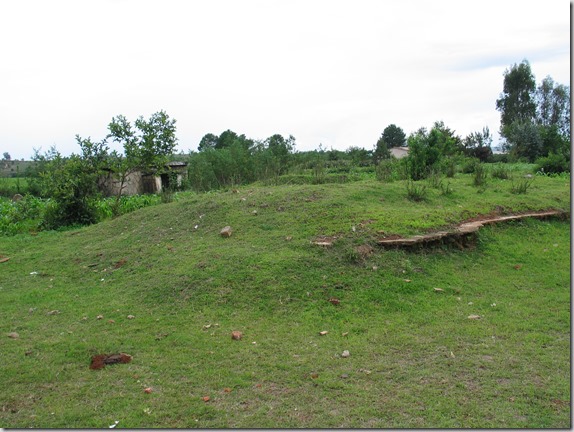
Nadine’s mother’s family tomb…
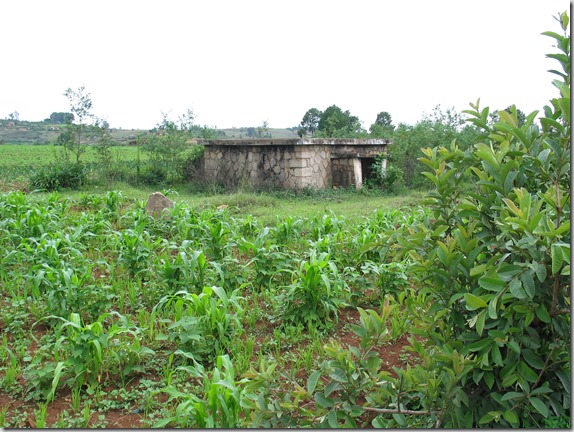
Debris of the other family house, which we did not expect to see destroyed…
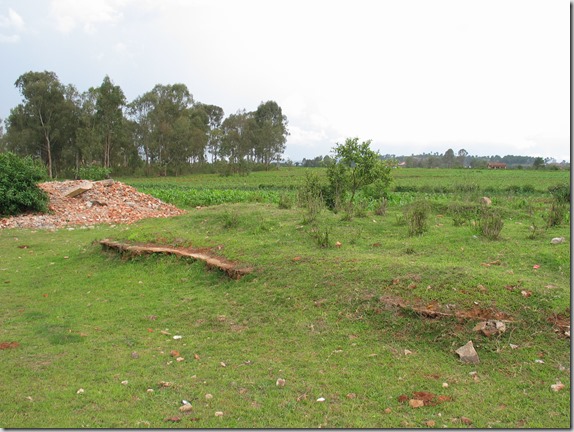
After visiting some family sites in Antsirabe, we went to a local store for a few things. Even out here, you can still buy Mentos!
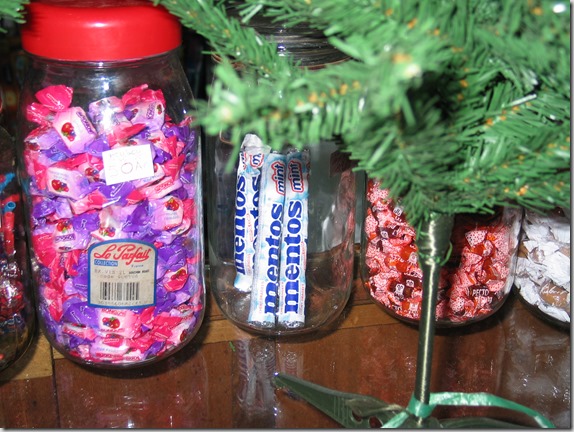
I changed some Euros for some local currency. The stack of bills you see are all 10,000 MGA (50,000 MGF), the largest denomination they have. This large stack is what you need to carry around in place of only 500 Euros. This is 1,310,000 Malagasy Ariary (6,550,000 Malagasy Francs). I didn’t convert all my Euros at once, because of the thickness of the local currency I would need to carry around.
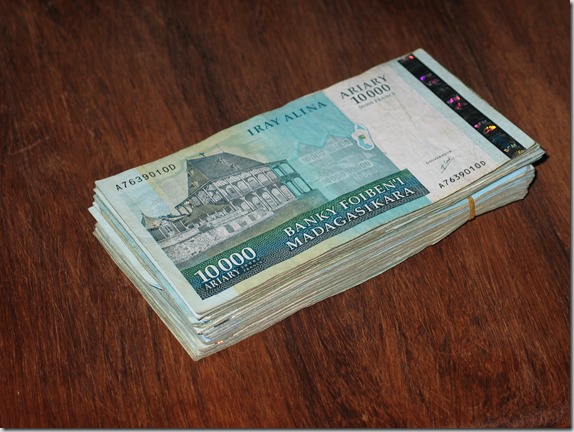
Instead of converting money at a bank, Tsiry recommended a jeweller that would offer a better rate. The jeweller needs Euros to purchase gold and silver abroad, and I needed Ariary for my stay, so this worked out well. We traded for 2,620 MGA = 1 EUR, and the bank was only offering 2,500.
After a stop back at the hotel to freshen up, we took rickshaws down to a local restaurant for dinner.
